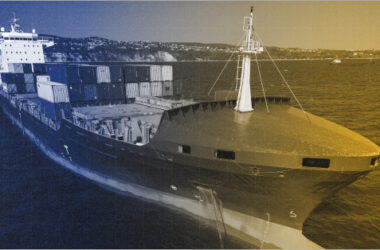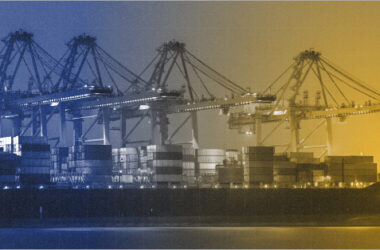Marine Insurance has evolved significantly over time. In the early days, Marine Insurance Policies were simple and covered only a few risks. However, as the industry grew, so did the complexity of the risks and the policies that covered them. Today, marine insurers face a range of risks, including loss and abandonment, and they need to have a deep understanding of these risks to provide effective coverage to their clients.
Managing loss and abandonment risks requires a comprehensive approach that includes risk assessment, underwriting, claims handling, and risk mitigation. Marine insurers need to have a thorough understanding of the risks associated with the vessels they are insuring, as well as the operating environment.
Loss in Marine Insurance
In Marine Insurance, loss refers to the damage or destruction of a ship or its cargo. This can occur due to various reasons, including natural disasters, accidents, piracy, and theft. The extent of the loss can vary from partial damage to destruction. The amount of compensation paid by the insurer depends on the nature and extent of the loss. Understanding the principles and types of loss in marine insurance is essential for anyone involved in the marine industry.
There are several types of loss in Marine Insurance, including total loss, partial loss, and constructive total loss. Total loss occurs when the insured property is destroyed or lost beyond recovery. Partial loss occurs when the insured property is partially damaged or lost. Constructive total loss occurs when the cost of repairing the damaged property is more than the value of the property itself. In addition to these types of loss, Marine Insurance also covers liability for third-party damage, such as damage to other ships or terminals caused by the insured party.
Understanding Abandonment in Marine Insurance
Abandonment is a term used in Marine Insurance when the owner of a ship or cargo gives up their rights and control to it, due to an insured event. This is usually done when the ship or cargo is lost or damaged beyond repair, and the cost of repairing or recovering it is more than its value. In such cases, the owner can abandon the ship or cargo to the insurer, who then becomes responsible for disposing of it.
Abandonment is a legal process that must be done in accordance with the terms and conditions of the insurance policy. The insurer must be notified of the intention to abandon, and the abandonment must be accepted by the insurer before it becomes effective.
Implications of Loss and abandonment for Insurers in Marine Insurance
Loss and abandonment in the context of Marine Insurance can have significant implications for insurers. Marine Insurance is a crucial aspect of global trade and commerce, providing coverage for various risks associated with the transportation of goods by sea. Loss and abandonment deal with situations where insured goods are damaged, lost, or abandoned during transportation. Here are some implications for insurers:
1. Claim Settlement Costs: Losses incurred due to accidents, natural disasters, or other perils covered by Marine Insurance result in claims. Insurers are obligated to settle valid claims promptly. The financial implications for insurers depend on the extent of the loss and the terms of the insurance policy.
2. Impact on Insurance Premiums: Marine Insurance premiums are affected by the frequency and severity of losses and abandonments. Insurers may increase premiums to cover the increased risk of loss, which can result in higher costs for policyholders. In some cases, insurers may also reduce coverage or increase deductibles to manage the risk. The impact of losses and abandonments on insurance premiums can vary depending on the type of vessel, cargo, and route. For example, vessels transporting hazardous materials may have higher premiums due to the increased risk of loss or damage.
3. Reinsurance Considerations: Insurers often purchase reinsurance to mitigate their exposure to large losses. Reinsurers share the risk and help insurers manage their financial stability. However, repeated, and severe losses may impact the availability and cost of reinsurance, affecting the overall capacity of the market.
4. Underwriting Practices: Insurers may reassess their underwriting practices based on the types of losses experienced. This could lead to changes in coverage terms, conditions, and exclusions. Insurers may become more selective in underwriting risks associated with certain types of cargo, routes, or vessels.
5. Legal and Regulatory Compliance: Loss and abandonment situations may involve complex legal and regulatory issues. Insurers need to navigate local and international laws governing Marine Insurance claims. Failure to comply with regulations can result in legal consequences and financial penalties.
6. Risk Management and Loss Prevention: Insurers may invest in risk management and loss prevention measures to reduce the likelihood of losses. This could involve working closely with insured parties to improve safety and security measures during transportation. Loss prevention efforts can positively impact an insurer’s bottom line.
7. Market Reputation: Insurers’ reputations are closely tied to their ability to handle claims efficiently and fairly. A poor claims settlement record may lead to a loss of trust among clients and brokers. Insurers need to prioritize effective communication and customer service to maintain a positive market reputation.
8. Market Competitiveness: The overall competitiveness of the Marine Insurance market in India can be influenced by the frequency and severity of losses. Insurers that effectively manage risks and claims may gain a competitive advantage, while those facing difficulties may struggle to attract and retain clients.
Claims and Compensation process related to Loss and abandonment.
Filing a Claim
When a loss or abandonment occurs, the insured party must file a claim with their Marine Insurance provider. The claim should include all relevant information, such as the date and location of the incident, the vessel involved, and the nature of the loss or damage. It is important to note that the insured party has a duty to mitigate their losses and take reasonable steps to prevent further damage. Failure to do so may result in the claim being denied or reduced.
Assessment of Damages
Once a claim has been filed, the insurer will assess the damages and determine the extent of coverage. This may involve an investigation into the cause of the loss or damage, as well as an evaluation of the vessel’s value and any salvage or recovery efforts. The insurer may also request additional documentation or evidence to support the claim, such as photographs, witness statements, or repair estimates.
Settlement Process
If the claim is approved, the insurer will offer a settlement to the insured party. This may include compensation for the value of the vessel, any repairs or replacement costs, and any other expenses incurred because of the loss or abandonment. The insured party may choose to accept the settlement or negotiate for a higher amount. If a mutually acceptable agreement cannot be reached, the dispute may be referred to arbitration or litigation.
It is important to note that the settlement process may take some time, especially if there is a dispute over the extent of coverage or the value of the damages. However, a knowledgeable and experienced Marine Insurance provider can guide the insured party through the process and ensure a fair and timely resolution.
Frequently Asked Questions
1. What constitutes actual total loss in Marine Insurance?
Actual total loss in Marine Insurance refers to a situation where the insured vessel is destroyed or lost beyond recovery. This can occur due to various factors, such as sinking, collision, fire, or piracy. The loss must be permanent, and the insured must not be able to recover the vessel or its cargo. In such cases, the insurer is liable to pay the full sum insured under the policy.
2. How does constructive total loss differ from actual total loss?
Constructive total loss in Marine Insurance refers to a situation where the cost of repairing or recovering the insured vessel or cargo exceeds its insured value. In such cases, the insurer may declare the loss as constructive total loss and pay the full sum insured to the insured. Unlike actual total loss, the vessel or cargo may still exist and be recoverable, but the cost of doing so would be uneconomical.
3. What are the various types of losses covered under Marine Insurance?
Marine Insurance covers various types of losses, such as total loss, partial loss, general average, salvage loss, and sue and labour expenses. Total loss refers to the complete loss of the vessel or cargo, while partial loss refers to the partial damage or loss of the vessel or cargo. General average refers to the voluntary sacrifice of a part of the vessel or cargo to save the rest, while salvage loss refers to the expenses incurred in salvaging the vessel or cargo. Sue and labour expenses refer to the expenses incurred in protecting or recovering the insured vessel or cargo.
4. In what scenarios is salvage loss applicable in Marine Insurance?
Salvage loss is applicable in cases where the insured vessel or cargo is in danger and requires salvage services to prevent further loss or damage. Salvage services may include towing, refloating, or repairing the vessel or cargo. The expenses incurred in salvaging the vessel or cargo may be covered under the Marine Insurance Policy.








